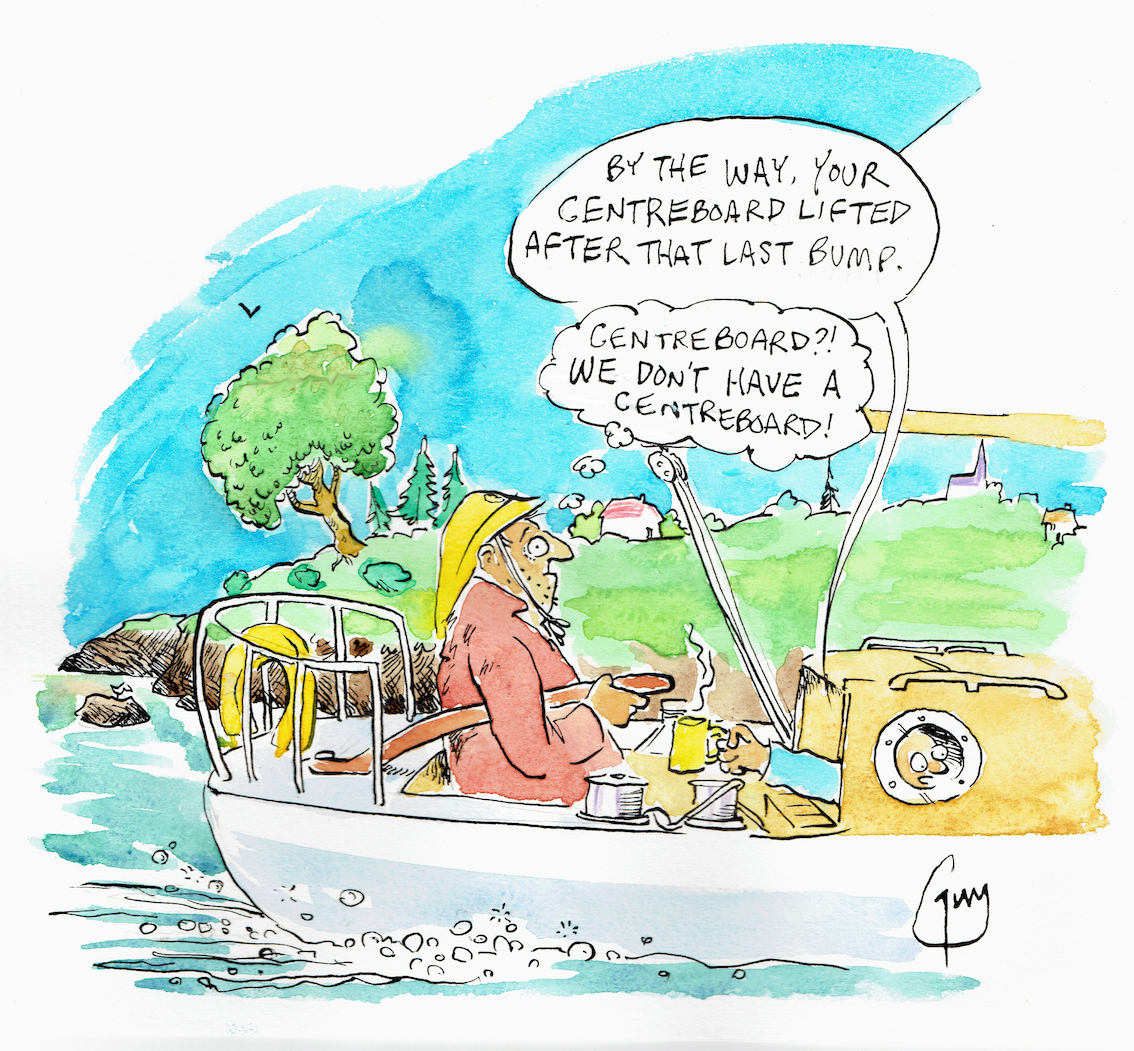I’m a bit stuck right now. Running aground comes to us all at some time. It’s how we get off that makes the difference
It’s a rite of passage. Anyone who sails, whether cruising or racing, will run aground at some point. The manner of that grounding will say a great deal about the character of the skipper of that boat and the way that he or she sails.
There’s the gentle nudge onto a soft and slithery mudbank, the grating and scraping on gravel and the solid, sudden and splintering crunch of something hard, a rock or concrete ledge. It’s not just the manner of grounding that speaks volumes, it’s also the manner of extrication, the process exacerbated by a rapidly falling tide. Those of us with centreboards can seem a bit smug, when the rattling of the board on the bottom gives an early warning, a smugness that is soon dispelled when hard aground and the board casing is packed solid with compacted mud.
Not that there is
no shoal water in the south,
as I know from hard
(and soft) experience
On England’s East Coast depths of more than five metres are cause for alarm whilst on the South Coast the same goes for waters less than five metres. It is no coincidence that the East Coast bred the shoal-draught cruiser from the boards of Maurice Griffiths and others whilst the South Coast is home to deeper keeled boats. Not that there is no shoal water in the south, as I know from hard (and soft) experience.
If there is an art to running aground it is to do so on a rising tide. To be high and dry on the top of a spring tide smacks of carelessness. There are also ways of coping with grounding. On a falling tide, once you’ve churned up great clouds of mud as you attempt to motor off there is resignation as you row out a kedge, put on the kettle and wait for it all to come back. The ruse of pretending to scrub and touch up the antifouling is a bit transparent.
One friend anchored under Dungeness to wait for the tide in his long-keeled classic cruiser. He and his crew bunked down and on waking he told me “the boat was eerily still”. He got out of his bunk, peered out of the companionway and froze. “She was completely dried out and balanced on her keel.” He crept back into his bunk and, without moving, waited for the tide to return. They survived. On another occasion I was sailing with a senior member of a very senior sailing club and the burgee at the masthead made it quite clear which club that was. As we tacked towards the entrance of the river that was his home port we suddenly slithered to a halt. With a loud ‘twang’ the burgee halyard parted and the masthead evidence came tumbling down.
As with running aground there is also an art in getting off. To attempt to get off with churning propeller and a fog of diesel fumes lacks finesse. A cruising sailor might row out a kedge, or kedges and ease her off with gentle pressure on each in turn. If, as on a racing boat, you’ve enough crew they can line up on the boom like starlings on a telephone line in an attempt to heel enough to get off. This, of course, is of little benefit on a bilge keeler as the draught increases as you heel. At times like this a cup of tea works wonders.
There is also an art in deliberately drying out alongside. You can carefully range your anchor and cable along the deck to impart a slight angle of heel so she’ll settled safely. You can also attach a masthead halyard to a strong point and tension it up as an additional safety precaution. Just don’t forget to let it go when you refloat and before you motor off. I’ve seen it happen.


